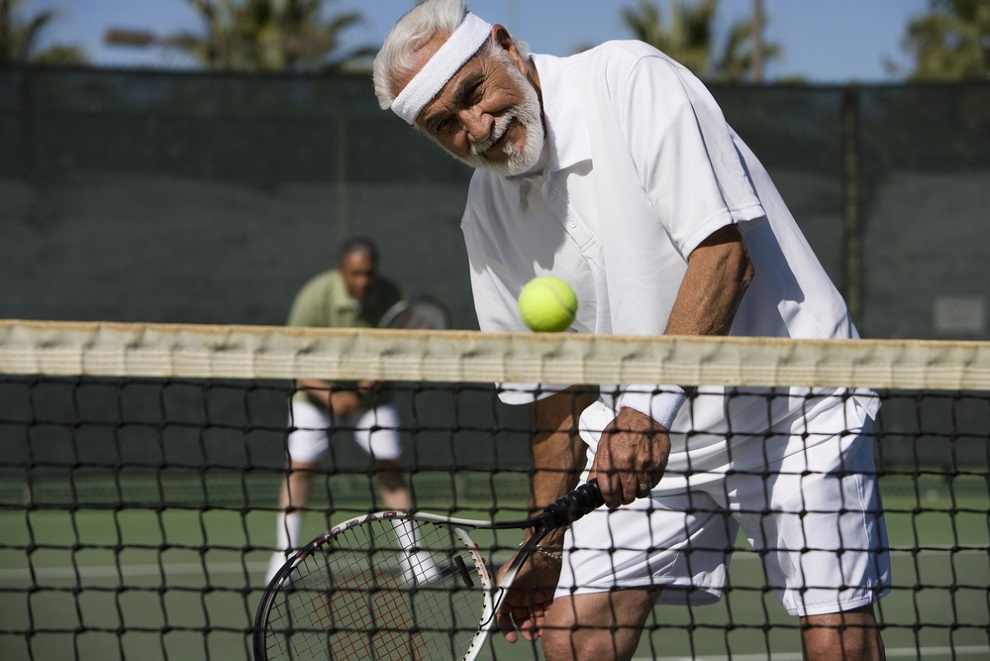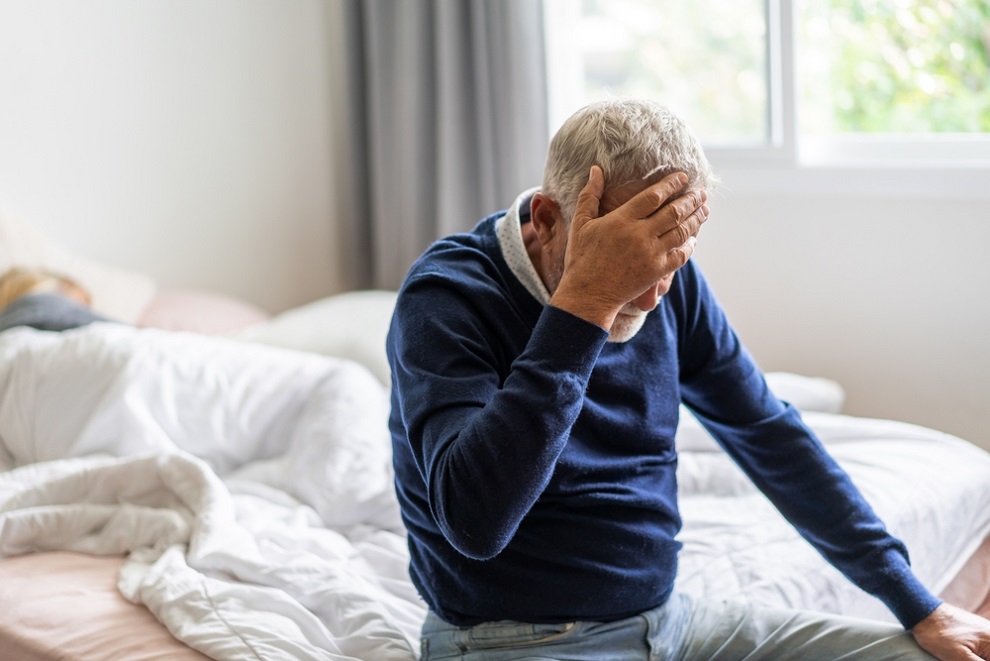You may have heard that many elite athletes use foam rolling, but how effective are foam roller exercises and can the average Joe use a foam roller, too?
Foam rolling is a self-massage technique that could improve your range of motion, muscle recovery, and athletic performance.
Read on to learn the science behind foam rolling, how to foam roll, and the types of foam rollers available.

What Is Foam Rolling?
Foam rolling is a self-massage technique that athletes use to improve their flexibility, performance, and recovery. It is considered a self-myofascial release (SMR) technique. However, this technique is not reserved for professional athletes alone. Foam rolling and foam roller exercises can be used for people with desk jobs, joint issues, poor posture, or bad exercise form.
“Myo†is the Latin term for muscle, and “fascia†is the soft tissue that connects the human body. There is a debate about exactly what counts as fascial tissue. Still, experts say it encompasses the connective tissues that form support throughout the body, surrounding organs, muscles, bones, and nerve fibers.
Most people use foam rolling during their fitness routines' warm-up and cool-down periods. They also use foam roller exercises to break up muscle knots and adhesions. They want to improve their joint range of motion and tissue mobility.
Physical therapists also use foam rollers to help patients recover from injuries. Foam rolling can be a part of rehabilitation during physical therapy sessions.
What is the Science of Foam Rolling?
Many athletes anecdotally report improvements in flexibility, recovery, and athletic performance. Although more studies are needed to fully assess the effects of foam rolling, there is some evidence to suggest that it does have positive benefits.
A 2015 study published in the Journal of Athletic Training stated that foam rolling is an effective technique for reducing Delayed-Onset Muscle Soreness (DOMS) in athletes. After an intense workout, many athletes experience muscle fatigue and soreness. During the research, a foam roller was used as a recovery tool.
They found that foam rolling post-exercise immediately after an intense workout and for 20 minutes every 24 hours after improved muscle tenderness. Foam rolling may help to alter a person's pain perception, offering relief from intense workouts.
According to a study published in 2019 in Frontiers in Physiology, researchers concluded that pre-rolling showed short-term improvements in flexibility. It was also a modality for elite athletes with recovery. Researchers were unclear on how foam rolling achieves these effects, but they also noticed that post-workout rolling alleviates muscle soreness.
In 2022, a study tested the effects of foam rolling training on performance parameters. During this study, they found that foam rolling training did not significantly change athletic performance. However, they did not think that further studies should retest these conclusions using high-volume foam rolling interventions.
More studies are needed to fully understand the wider scope of benefits and possible side effects of foam rolling. Although it may show improvements in some areas, it is important not to overdo it or to use it too frequently since there are many unknowns.
There is still no evidence on whether foam rolling improves athletic performance measures.
How Does Foam Rolling Work?
Although the exact mechanisms behind foam rolling's effectiveness are unclear, there are some theories.
One possible way that foam rolling could help is through sensory stimulation and mechanoreceptor activation. When a person applies a foam roller to a muscle, they stimulate the sensory receptors in the muscles and fascia of that area. These mechanoreceptors, specifically the Golgi tendon organs (GTOs) and muscle spindles, respond to the pressure.
The mechanoreceptors then respond by relaxing the target muscle. The relaxation alleviates muscle tension and reduces sensitivity, which may lead to improved muscle function. The pressure from foam rollers may also temporarily suppress muscle spindles. Muscle spindles detect muscle length. Their relaxation may help to remove the feeling of muscle stiffness.
Another way that foam rolling may help with recovery and flexibility is that it also puts pressure on your blood vessels. The mechanical stress on the blood vessel walls releases nitric oxide synthase (NOS). NOS interacts with l-arginine, an amino acid, to form nitric oxide. Nitric oxide is a popular treatment for erectile dysfunction and heart disease because it is a muscle relaxant.
If you need erectile dysfunction medication, Male Excel can help. With us, you can bypass the inconvenience of in-person healthcare and get ED medication delivered to your door. Simply complete an online medical history form. Then, a US-licensed provider will prescribe your dosage.
Then, you will receive your ED treatment in the mail. The package with your prescription will arrive with 2-day shipping in discreet packaging. We offer gold-standard, FDA-approved generic ED treatments that are as effective as the name brand without the name brand price.
Nitric oxide not only helps give you a lift when you are having difficulties in bed, but it can also help you as you work out. The stimulation of the production of nitric oxide causes blood vessel walls to widen and relax, increasing blood flow. As you work out, increased blood flow can improve oxygen utilization, decrease fatigue, and increase your ability to perform aerobic exercises.

Types of Foam Rollers
There are a lot of foam rollers to choose from. Foam rollers vary in density, texture, and size.
Density
The density of a foam roller can affect how well it massages. Too soft of a foam roller may not properly stimulate muscle tissue, while too hard of one may cause bruising. A good foam roller for a beginner should be on the softer side. As you become more adept at foam rolling, you can move onto denser (or harder) rollers.
Denser rollers are good for long-term use and they prove to be more durable. After a while, softer rollers can become deformed and need to be replaced. Manufacturers offer indicated density with the color of the roller. Here are some common colors for certain densities:
- White: soft
- Blue and Red: medium
- Black: hard
These colors may vary by brand. Squeeze the roller to help yourself assess its hardness.
Texture
Foam rollers can either be smooth or textured. Smooth rollers are perfect for beginners because they are less intense and less expensive than textured rollers. Textured rollers have ridges and knobs meant to target the knots in your muscles. There may be a variety of textures on a roller to improve the effects of self-myofascial release.
To pick the best one for you, experiment with different textures to see which one feels best.
Size and Shape
The length of foam rollers can vary. Shorter rollers, around 24 inches long, are used for targeted areas like arms and calves, but the short lengths can be as small as 4-12 inches. These are great for portability and small workout spaces. Longer rollers are better for quads and hamstrings. They are also more stable than shorter rollers.
Another way that foam rollers can change is in diameter. Most are about 5-6 inches around, but there are also some smaller diameters, such as 3-4 inch diameter rollers, which are better for deeper massages.
Some foam rollers are half-round. These look like they've been cut in half lengthwise. These are perfect for leg and foot stretches. They are great for foot arch relief, as well.
Other rollers may be shaped like balls, which can help provide targeting and pressure control. They work great in the lumbar area and on the body's curves.
Foam roller sticks are shaped like rolling pins. They are used on the legs to regulate pressure. Some flexible rollers can also help massage the upper back.
When deciding the best foam roller for you, consider how you intend to use it. You may need a couple to target different areas and provide a full-body self-massage. This effective tool will be the perfect addition to your workout equipment.
How Do You Use a Foam Roller?
Gentleness is a key point when considering the use of foam rollers. If you are too intense, it can be painful. As you learn how your body responds to foam rolling, you can intensify your foam rolling. The feeling you should experience when foam rolling is a level of discomfort that also feels satisfying.
Foam rolling through tense areas can be uncomfortable, but it should never be painful. If you are experiencing actual pain, you should ease back on the intensity. Going too hard with the foam roller can bruise muscles and risk injury.
Here is a step-by-step guide for the use of a foam roller.
- Find the sore or tight spots in your muscles. Isolate one area to begin with.
- Center your body above the roller.
- Place your body onto the foam roller. You should reach a point of discomfort.
- You will hold this position for 20-30 seconds.
- Then, slowly roll back and forth on the roller to stimulate the area.
- Now, continue moving the roller back and forth along your muscles, stopping and holding pressure in areas that need more tension releases.
You can try some variations. Foam roller exercises target each muscle group, and different positions may affect those tight areas differently. You should always remember to breathe while using the foam roller.
Foam Rolling Exercises to Target Your Muscle Groups
If you are trying to target specific muscle groups, here are some common exercises you can do with a cylindrical foam roller.
Calf Exercise
Sit on the ground and extend one leg straight in front of you. Then, place the cylindrical foam roller under the calf of your extended leg. With your other knee bent and your foot resting on the floor, prop yourself up on your arms. Lift your bottom off the floor and roll the foam roller from your ankle to below your knee.
When you reach a tender spot, stop and allow the foam roller to apply pressure to that area for 20- 30 seconds. Then, move on. Rotate your leg to work the sides of your calf. Flex your ankle to engage the calf muscle while rolling.
Quadriceps Exercise
Lie face down and place the foam roller beneath your thighs. Prop up on your elbows. Roll from your knees to your hips. To work one quad, roll one of the foam rollers under one leg at a time, or you can work both quads at once by rolling both legs.
Hamstring Exercise
Sit with your arms extended behind you and the roller beneath your thighs. Roll the foam roller back and forth between the knee and your bottom. You can focus on one hamstring and a time or roll both hamstrings at once.
Glute Exercise
Sit on the foam roller with knees bent and feet on the floor. Use your extended arms to support your body. Lift one of your feet and place it on the opposite knee. Now, you will tilt toward the side of your propped-up leg and roll back and forward. Then, switch sides and repeat.
Upper Back Exercise
Position the foam roller below your shoulder blades as you lie down on your back. Place your hands behind your neck to support your head. Then, bring your elbows in towards your chest. Bend your knees. Lift your bottom and roll the roller from mid-back to just below your neck. You will need a shorter foam roller to target this area of your body.
Conclusion
Foam rolling can have some positive effects on your post-workout recovery and flexibility. The benefits of foam rolling are backed by science, although more research is needed to fully comprehend the positives and negatives of foam rolling. Athletes are not the only people who can benefit from foam rolling.
Foam rolling can be an effective way to relieve muscle pain and encourage more dynamic stretching for anyone working out. Remember to apply pressure to your trigger points, but don't overdo it, or you can cause muscle damage and pain. Foam rolling is best when it is used as a warm-up or cool-down exercise.

Find out if TRT Can Help You
TRT from Male Excel





